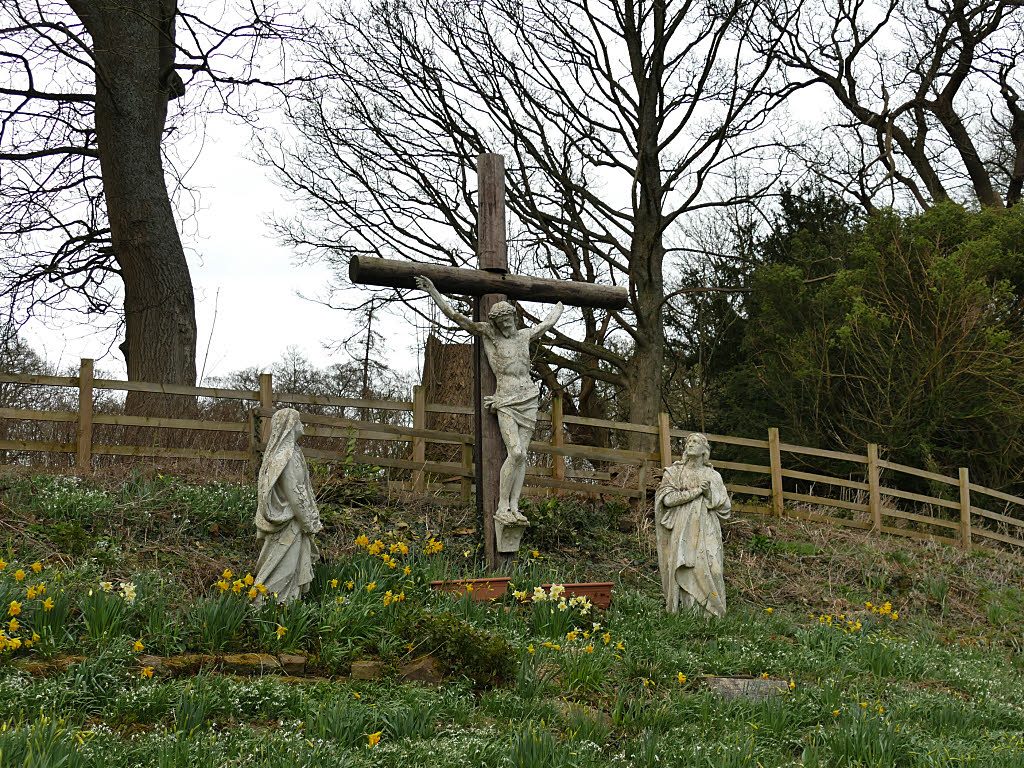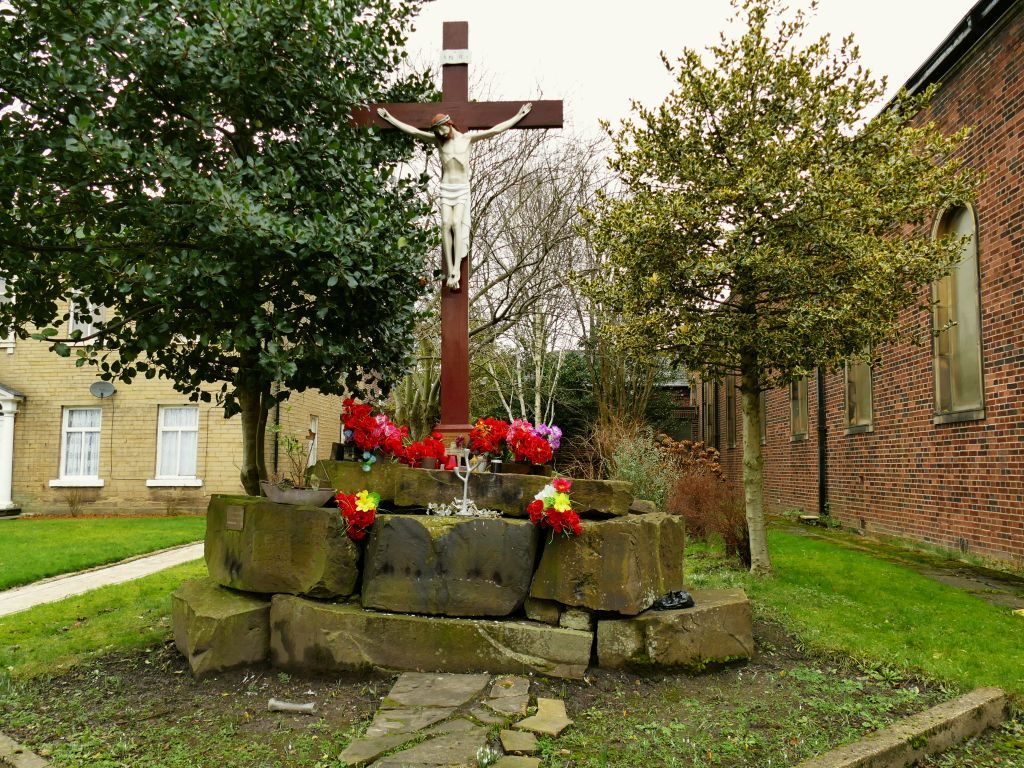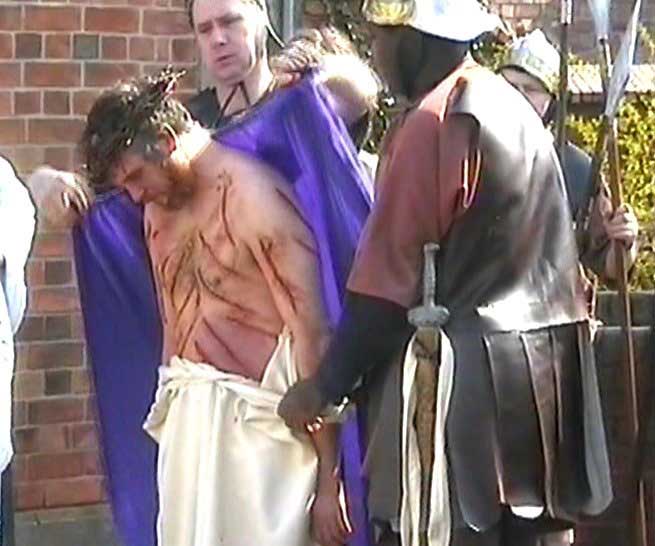
Today’s hymn from Sing Praise is another Good Friday one, and a twentieth century translation of a much older sixth century Christian text, ‘Vexilla Regis’ (‘the King’s banner’). In the hymn book it’s set to a version of the traditional monastic chant, but John has played it to a better known English hymn tune ‘Gonfalon Royal’ that also allows for the Amen at the end.
I looked up the original on Wikipedia where several English translations are offered. The Latin original is said to have been written to celebrate the arrival of a large relic of the True Cross which had been sent to Queen Radegunda. The ‘banner’ may therefore be intended as meaning the cross itself as a sign and symbol of our salvation, although another interpretation would be Pilate’s sign above the Cross, “Iesus Nazarei Rex Judaeorum” (Jesus of Nazareth, King of the Jews).
The hymn celebrates the same paradox of ‘sadness and gladness’ that I explored yesterday but goes into more detail of how the scandal of the cross is for Christians a sign of hope. The optional verse 6 sums it up concisely: “The saviour, victim, sacrifice, is through his dying glorified; his life is overcome by death and leaps up, sweeping death aside”.
The ‘veneration of the cross’ is of course a Catholic practice which is not part of the Christian tradition I come from. As the Catholic News Agency website explains, “Adoration or veneration of an image or representation of Christ’s cross does not mean that we actually adore the material image, but rather what it represents. In kneeling before the crucifix and kissing it we are paying the highest honour to our Lord’s cross as the instrument of our salvation. Because the Cross is inseparable from His sacrifice, in reverencing His Cross we, in effect, adore Christ.” But why not ‘cut out the middleman’ and worship Christ himself rather than the inanimate wood on which he hung?


